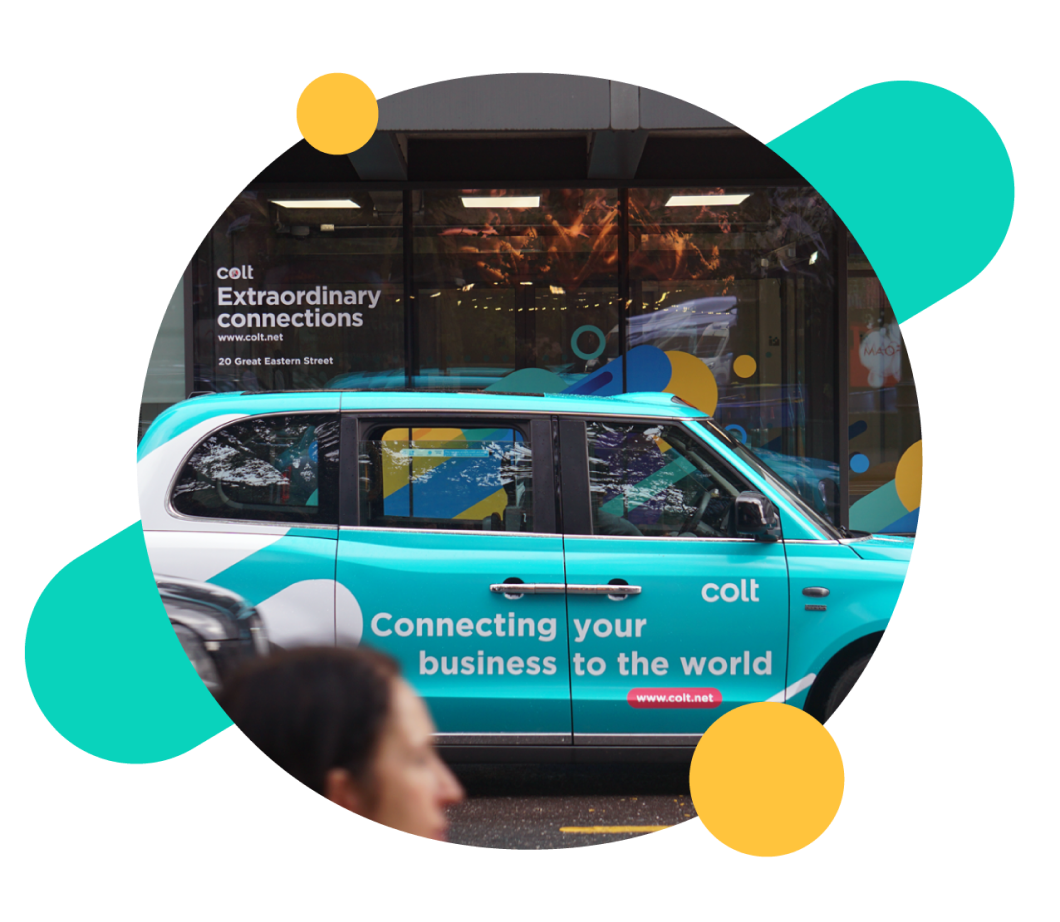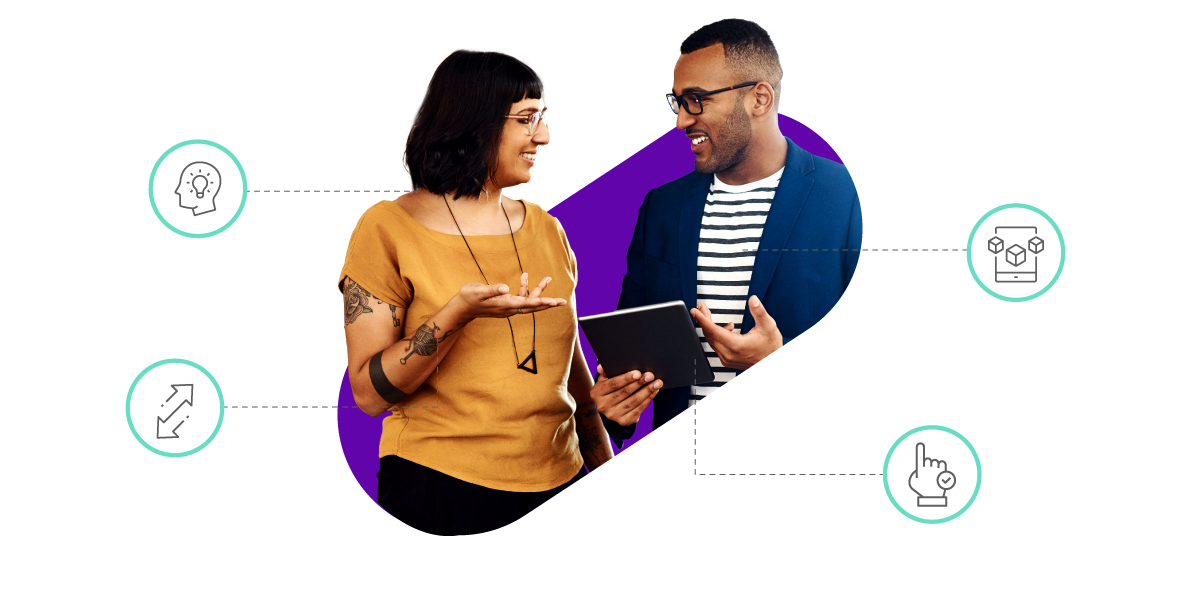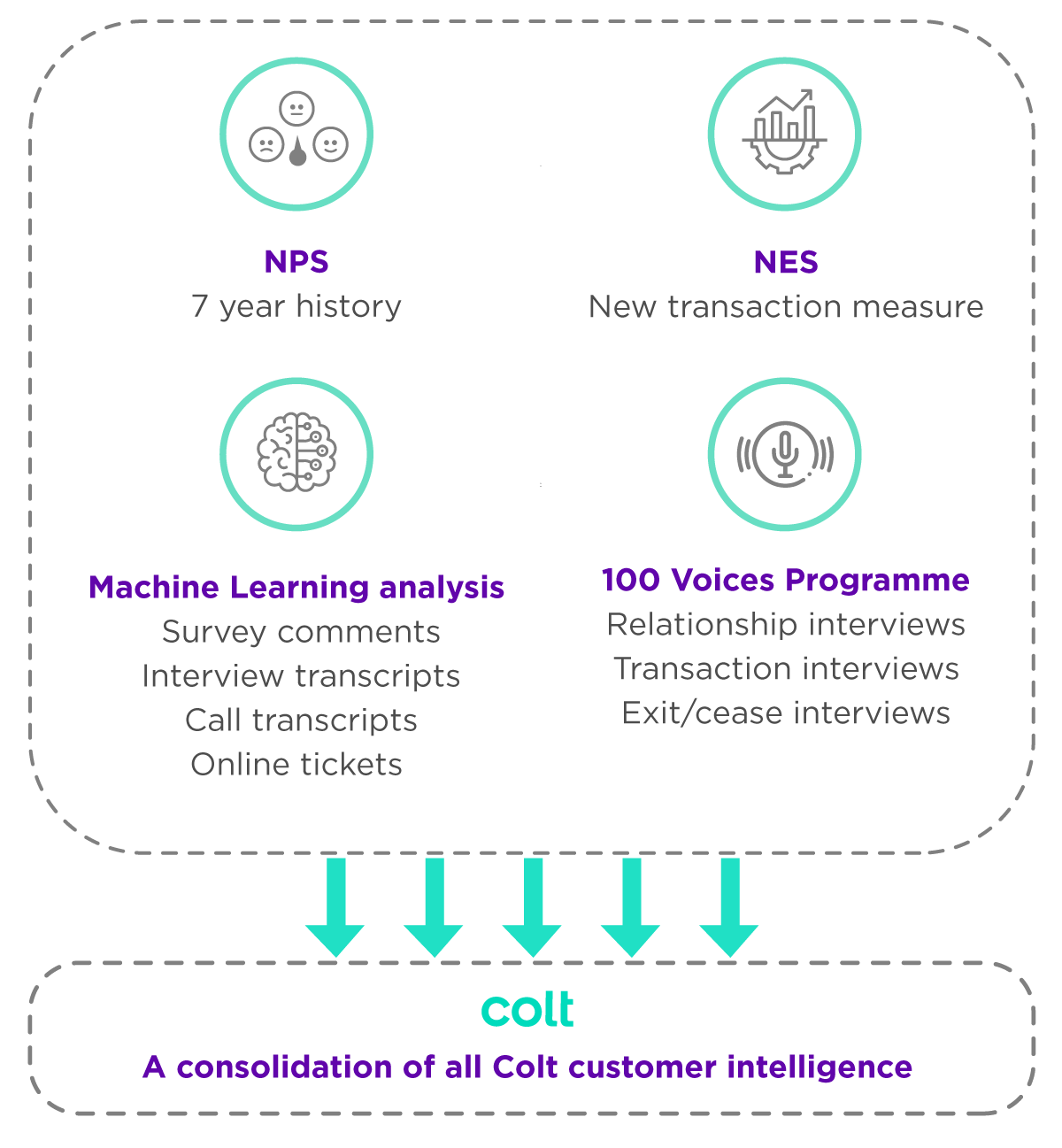Digital infrastructure insights
Elevating the customer experience

Welcome
In this series we will looking at the critical role digital infrastructure (DI) plays in delivering an exceptional customer experience (CX), giving businesses that competitive edge.
As businesses battle to find new and improved ways to provide a superior customer experience, it’s become evident just how much customer expectations are evolving. Investing in strategic, well-built digital infrastructure has emerged as one of the most effective ways businesses can provide seamless and personalised experiences across multiple channels, without adding to workloads.
If you're a business looking to make customer experience your differentiator, you've come to the right place. This series features a host thought-leading content and advice from top analysts, influencers and leaders in the DI and CX space. We'll also share some of our own secrets to success.
So, grab yourself a large cup of coffee and get ready to overindulge. Let’s explore how well-oiled digital infrastructure can transform your business and drive it forwards.

1. What is digital infrastructure?
Digital infrastructure is the hardware and software technologies that help support a company’s digital operations. It helps them operate, innovate and meet customer needs.
DI can be made from physical or virtual components. Examples include connectivity, the cloud, security, data centres and applications.
Digital infrastructure is crucial for today’s businesses because it's essentially the foundation upon which their digital systems and services are built. This type of infrastructure allows companies to store, process, and transmit a great amount of data, connect efficiently with customers and partners, and deliver a wide range of digital services on a much larger scale.
Our 2023 Digital Infrastructure report revealed that ‘the majority of IT decision-makers agree intelligent infrastructure can deliver multiple benefits to corporations, colleagues and customers.’
If we fast forward past the switch from dial-up modems to broadband internet, over the past ten years, there has been an extraordinary increase in investments in digital infrastructure. This was driven by growing smartphone usage, the digital transformation (DX) of industries, the expansion of cloud computing and the increased importance of data analytics and cyber security. However, now we’re in the midst of a forth industrial revolution, its AI, robotics and the internet of things that are transforming the CX and fuelling a surge in demand for DI. IBV reported that 78% of global executives have an approach to scale generative AI into customer and employee experiences.
We’ve moved way beyond the need for just a simple connection and basic hardware.
In the past, updating infrastructure was slow and expensive. Today, it can be agile, scalable and cost-effective thanks to technology which never stops evolving.
Businesses of all sizes now rely on technology to drive their operations, stay competitive and support their customers. However, building and maintaining this technology can be complex and costly.
Once upon a time, companies used to view things like the cloud, storage, and connectivity as separate items. Today, they realise that they can take a much more holistic approach and look at infrastructure as a whole.
The best DI businesses bring together the technology ecosystem that their customers need to deliver, whether that’s growing network reach via partnerships, adding security or building a full enterprise solution. Rather than having to work with multiple vendors and complicating the buying and management process, companies like Colt provide a single point of contact.

2. The challenges of building digital infrastructure
The adoption of intelligent infrastructure is critical for companies to excel and meet customer expectations. From cloud computing to data analytics, technology has reshaped the way businesses operate, compete and grow.
However, despite the many benefits, building and managing truly agile digital infrastructure can be a tough ask.
Digitising operations is normally a gradual process that takes time and effort. Companies can face barriers such as cost, time and complexity when making important decisions like switching suppliers or upgrading infrastructure. Long-term relationships or contractual obligations may also hinder the transition process. However, the motivations of enhanced customer service, scalability, collaboration, lower costs and more efficient technology often outweigh the barriers.
The most common challenges when it comes to building successful DI typically fall into three categories:
Taking a holistic approach to digital infrastructure shifts the budgeting focus from individual projects to overall business needs. Companies must weigh the costs and benefits of building and maintaining infrastructure, considering global versus local priorities in supplier selection.
DI adoption impacts the entire organisation, requiring leadership buy-in, which is especially challenging during budget cuts. Collaboration across teams, beyond just IT, becomes essential, as does managing partner relationships. Success depends on having a single point of contact and ensuring tight platform integration.
Digital infrastructure enables a business’s existing processes and systems. It needs to be designed to scale with the growth of a business and therefore it needs to be able to handle increasing amounts of data and traffic as the business expands. Legacy systems, while critical, often struggle to integrate with modern technology due to being designed for different challenges in a different era. Transitioning from outdated systems, such as moving from hardware to software, can be difficult but is essential for gaining benefits like flexibility.
Businesses must also manage the demands of multiple users and departments, deciding who will oversee control, maintenance, and updates to ensure the new infrastructure runs smoothly. This task is particularly time-consuming when dealing with complex systems.
Infrastructure must be designed for future use cases and business needs, with flexibility across all components, rather than just in pockets. This can be difficult when working with multiple vendors. Ensuring employees are trained to effectively use the new infrastructure is crucial.
With various access methods, such as for hybrid and mobile workers, companies must prioritise accessibility and inclusion, ensuring a seamless user experience across all platforms. Careful monitoring of apps running on the infrastructure is essential.
Digital transformation generates vast amounts of data that must be managed according to specific data protection laws. Businesses need to have processes and tools in place that will store, analyse, and make decisions based on this data. Security is a top concern when building DI, especially in cloud environments, so it must have robust defences against cyber-attacks, data breaches, and other threats.
Businesses can work with partners who have experience working across different ecosystems, to help them navigate challenges and make their digital transformation journey easier.
If you are looking to build on and improve your existing infrastructure, you will need to consider the below actions:
- Assess current infrastructure
- Define goals
- Find the right partners
- Develop a plan
- Invest in the right tech & maintenance
- Prioritise cyber security
- Train your people to use the new infrastructure
- Monitor and adjust
- Prioritise data management
Businesses who do these things effectively can remain competitive and look forward to new infrastructure with enhanced performance capabilities that deliver improved customer experiences.
If you’re looking for tips on how to build end-to-end agile digital infrastructure to suit your business needs, our joint whitepaper with Equinix would be a great place to start.
Whitepaper
How to capitalise on your digital infrastructure
Drawing insights from the Fireside Chat between Colt and guest speaker Pascal Matzke, VP and Research Director at Forrester Research, this paper provides practical advice on how to get started with digital infrastructure, underlining the need to transition from traditional, linear transactions to continuous interactions.
Read on to discover how digital infrastructure is not merely a connectivity tool but a catalyst for business value, increased revenue, exceptional customer experiences and enhanced employee productivity.

3. Customer experience through the lens of digital infrastructure
A few years ago, most companies would say it was the quality of their product or service that helped them win new customers.
Today, it’s just as important to provide a high quality, consistent and personalised customer experience. CX has a direct impact on the success and longevity of a business, and well as its bottom line. Customer-centric brands report profits that are 60% higher than those who fail to focus on CX.
A positive customer experience can lead to loyalty, repeat business, increased revenue through upselling, great reviews and referrals, whilst we all know what a bad experience lead to.
Here are just a few recent CX statistics that speak volumes:
Knowledge is key
Today, customers hold the power. Gone are the days when a customer would buy a product or service with little or no research. Technology and the internet has now enabled them learn all they need to about a business and its offerings in seconds.
This goes way beyond just what they offer and how they treat customers but to sustainability and ethical practices.
The competition for customers has never been fiercer. Businesses can’t rely on price alone to differentiate themselves as there will nearly always be a competitor there to swoop in. And with brand loyalty in a steep decline, businesses now realise they must prioritise creating a customer experience that’s worth coming back for. This is why companies are making CX their top priority with some basing their entire company strategy around the customer journey.
Businesses must figure out what buying experience their key customers want and then deliver that with a cherry on top. A great first impression is key, but that level of attention must be delivered at every touchpoint of the buying process.
Customers expect to consume relevant, accessible content, in the format of their choosing, at any time. Whether that’s on social media, in store or on a company’s website, messaging must be adapted to create that seamless omnichannel experience. Businesses who fail to recognise this and react will be left behind for a better option and experience. Over 50% of customers will switch to a competitor if they have a single negative impression.
By investing in the necessary infrastructure and support services, businesses can offer a consistent, personalised and seamless customer journey that sets them apart. 80% of leaders are planning to increase customer service budgets over the next year. But even companies who flaunt the latest technology or snappy design can disappoint customers if they haven’t focused on or invested in the most meaningful aspects of customer experience. Customers want speed, consistency, easy and friendliness – that human element.
Forbes states that what really drives a customer’s willingness to purchase (and repurchase) from a business is the emotional resonance of the interaction – how it made them feel.
The digital age has revolutionised customer experience, with digital technologies now central to every customer interaction. Recent advancements in AI and machine learning allow brands to better understand their customers, deliver faster solutions, and personalise experiences. Tools like AI-powered chatbots and virtual assistants are now the norm. Our 2023 Digital Infrastructure report revealed that 88% of those surveyed are either using or planning to use AI in their business for customer experience purposes. In fact, 65% of customer experience leaders see AI as an indispensable tool for enhancing interactions and gaining a competitive edge.
However, these benefits hinge on having agile, well-built digital infrastructure as this enables businesses to operate efficiently, make data-driven decisions, and meet the demands of hyper-connected customers. Enhancing customer experience requires more than just technology – it requires the right digital foundation. Deploying intelligence relies on the best architecture; get it wrong and the customer and user experience will suffer.
Measuring customer experience is essential for a company’s success, helping to pinpoint areas for improvement and ensure customer needs are met. While the approach varies, most metrics fall into five categories: customer satisfaction, loyalty/churn, advocacy, product quality, and employee engagement.
Though metrics like Net Promoter Score (NPS) are valuable, they shouldn’t stand alone. Other key measures include customer satisfaction surveys, Customer Effort Score (CES), reviews, journey mapping, behavioural analysis and Customer Lifetime Value (CLTV). Different sectors tend to prioritise specific measurements. For example, some of our prospective customers will be more interested in how we performed in ‘Gartner’s Peer Insights: Voice of the customer’ than our latest NPS scores.
There’s no one-size-fits-all approach; companies must identify the metrics that work best for them, using a combination to gain a full understanding. Relying on an annual survey is outdated – CX measurement must evolve with shifting economies and advancing technology. Crucially, businesses must act on customer feedback to make meaningful improvements. Would customers come back if you had a loyalty programme? Would they return if the buying journey was simplified? Did that last edition of your product really hit the mark? You get the idea.
As a leader in digital infrastructure, we continually seek to enhance our CX efforts. Later in this series, we’ll share some of the tools and metrics that help us consistently exceed customer expectations.

4. Creating a future-proof business: A spotlight on ESG goals and customer needs
As sustainability becomes a core expectation, it's no longer sufficient for companies to simply set sustainability goals.
Technology leaders must now embed ESG (Environmental, Social, and Governance) principles into their infrastructure from the ground up. This approach not only aligns with customer expectations – who increasingly prefer to buy from companies committed to doing the right thing – but also enhances transparency, a crucial factor in today’s purchasing decisions.
To dive deeper into this topic, we welcomed Professor Sally Eaves, a renowned influencer and expert in emerging technologies and their societal impact. Sally, often called the ‘torchbearer for ethical tech,’ discusses three major trends shaping the industry today: digital infrastructure, ESG, and the evolving landscape of customer experience – or as Sally refers to it, the personalisation of experience.
Watch now to gain insights into how these trends are transforming businesses:


5. The Colt experience – what it means for our customers
For over 30 years, Colt has been helping businesses succeed by delivering extraordinary connections with genuine care. We’ve grown from a City of London challenger telecommunications company into a global digital infrastructure business.
We’ve gone from strength to strength, increasing our presence, making an impact through smart investments, bringing invaluable employees onboard (our Colties), building strong partnerships, refining our own DI and, of course, offering customers the best solution to their transformation needs.
Most recently, we acquired Lumen EMEA which elevates us to one of the world’s largest business-to-business-only digital infrastructure companies and an influential global player. This move gives us the opportunity to extend our award-winning customer experience to customers who have moved over from Lumen. It also allows us to offer our own customers an extended portfolio of new services.
IDC’s Spotlight paper on our integration with Lumen EMEA stated, ‘As Colt moves forward, the synergy between past and new networks, technologies, and sustainability initiatives promises to deliver a superior customer experience, marked by seamless connectivity, operational excellence, and a reduced environmental footprint.’
Today, we may be known for our industry-leading net promoter scores and ongoing commitment to sustainability, but we also differentiate ourselves through a little something we like to call the Colt experience.
The Colt experience is all about delivering exceptional customer service at every touchpoint. It’s how we build and retain strong, valued relationships with our customers. We ensure our customers always feel heard, valued, respected and empowered. Our success is driven by the trust our customers place in us; they know we always act with their best interests in mind.
This commitment to customer experience is reflected in our NPS scores, industry awards, and the evolving standards we set for ourselves. However, this wouldn’t be possible without our relentless focus on improving customer experience through a range of measures.
At Colt, our customers mean everything. We are committed to putting the power of the digital universe in their hands wherever, whenever and however they want. Our goal is to keep our customers ahead and in control throughout their journey, fostering a culture of ease and flexibility.
We work closely with them to understand their unique goals, shaping our services to meet their needs. Through our consumption-based approach, customers are able to only pay for what they use, giving them the confidence and control to engage with our ecosystem of technology partners. This flexibility is why customers choose Colt – our services are simple, swift, and fully automated, enabling them to do more, faster, on a global scale.
This approach allows us to deliver a seamless and memorable experience at every stage, from the initial inquiry to service delivery and ongoing support.
Our people are our backbone. They are committed to truly listening to our customers and understanding their needs, ensuring we consistently exceed expectations. With a network that spans over 32,000 buildings with direct fibre connections across 40 countries, we offer global reach with local expertise. We empower our diverse team because we believe the best ideas come from those who feel they can innovate and contribute to our customers' success.
What really sets us apart though is that our people genuinely care.
It goes without saying that we wouldn’t be able to deliver a leading customer experience without our partners who we carefully pick to ensure our beliefs and values are aligned (especially on issues like sustainability). By working with some of the biggest companies in the world across cloud, software, data and technology, we can offer the best solutions and connect customers wherever they need.

6. Measuring customer experience at Colt
Customer experience management is on the rise and over 5,000 companies worldwide have a dedicated CX leader, nearly half of whom report to the CEO. CX impacts a company’s bottom line and customers are now willing to pay more for a better CX.
But what does a good customer experience look like? Responsiveness may come to mind, the quality of a product or service, or perhaps a belief that a company actually cares. But this can of course vary depending on who you’re asking and the business they’re thinking of. So, how do you measure a ‘good’ experience and how can the right platform let you do that more effectively?
Delivering an impressive customer experience needs to be a priority for the entire business. There’s no point having it as a focus for some teams, if others are going to treat it as a bonus. For us, it's a key part of our strategy and something every team takes seriously. It’s no secret that employee experience is vital in driving customer experience. Engaged, empowered and fulfilled employees are more likely to deliver exceptional customer service and much more.
We embrace continuous learning across multiple channels. We listen to our customers to get the fairest and most accurate view, but what really matters is what we do with that information. Listening is great, but acting on what you’ve learned is what counts.
Types of measurement
When it comes to tracking and measurement, NPS is a commonly used metric across most industries. NPS asks customers how likely they are to recommend a product or service. Before the acquisition of Lumen EMEA, our scores were well above average for our industry. But that’s just part of the picture.
Another form of measurement is NES. This measures how easy it is to do business with you as a company. So, while NPS might cover a general level of satisfaction over the service you deliver and the support that goes with it, NES tracks how customers find the experience of buying from you. At Colt, this covers around 8,000 customers per year, and we follow up on every customer comment.
We also speak to our customers to get more qualitative feedback. Our ‘100 Voices’ programme involves speaking to 100 customers every month to get more detailed feedback on the Colt experience and what it looks like for them.
We take this data, along with insights from customer service tickets, quality scores from our customer facing teams and call transcripts, and apply it to our risk dashboard. This is a custom-built machine learning tool which can be analysed at scale. This allows us to identify trends and gain detailed insights over time. We then present this information back to the business and act on both positive and negative feedback.
We uniquely position ourselves by building digital infrastructure not only for our customers but also for our own operations. Our scalable, responsive and agile foundation allows us to react quickly, empower our teams, and collaborate with partners to deliver tools and products that make a real difference for our customers. This includes enhanced network monitoring tools, improved delivery process insights and closer alignment with our partners.
Our success is driven by the insights we gather, our CX-focused strategy and our dedicated teams. By continuously striving for improvement, we consistently deliver a superior customer experience.


7. The new customer: embracing digitalisation
As technology evolves, so does the way businesses engage with their customers. The future of customer experience is being shaped by advancements in AI, AR/VR, 5G, and robust digital infrastructure.
To stay competitive, businesses must leverage these technologies to meet the demands of the always-connected, tech-savvy customer.
Today’s customers insist on seamless, personalised experiences during every interaction. With rising expectations for real-time service and consistent cross-channel interactions, businesses must prioritise digitalisation to meet their demands.
Key technologies for enhanced CX
- AI and data analytics: AI-driven insights enable personalised experiences by analysing customer behaviour and preferences
- AR/VR and 5G: These technologies can create immersive, engaging experiences and help with fast, reliable service
- Omnichannel engagement: A unified strategy across all platforms ensures consistent customer interactions
The role of DI
Intelligent digital infrastructure is the backbone of successful CX, allowing businesses to scale, manage, and optimise their operations while staying agile and responsive. Now’s the time for companies to assess their tech stack and consider making new investments.
Balancing technology with human interaction
While technology enhances efficiency, the human touch remains vital. Customers still value personal interactions, so a balance between AI and human service is important. Technology should augment not replace genuine human connections. In fact, businesses are now using the power of empathy to drive customer-centric strategies.
Securing data and building trust
As data becomes central to CX, robust security measures are essential. While businesses should be using digitised customer data from different sources to automatically generate insights from their behaviour, protecting this data is non-negotiable. 50% of customers are in fact willing to share their personal information to help create a tailored customer experience.
Next steps
To excel in CX, businesses must embrace digitalisation, leverage data-driven strategies, and maintain a balance between technology and personal service.
Choose the Colt experience
At Colt, we’re dedicated to being your trusted digital infrastructure partner. Contact us today to elevate your customer experience with our industry leading technology and expertise.




